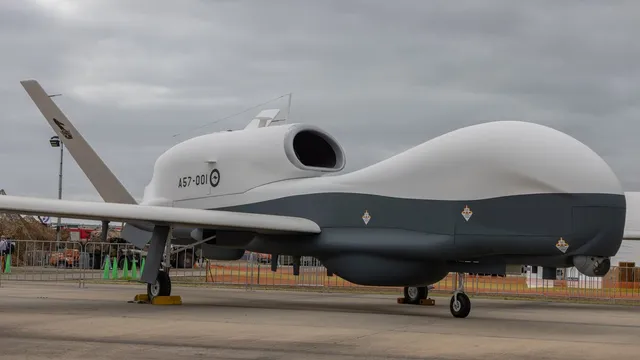
US sends long-range surveillance drones to Japan amid rising tensions
2025-04-09 09:10- The US is sending MQ-4C Triton long-range surveillance drones to Japan for monitoring China's drone activities.
- The deployment to Kadena air base is part of efforts to enhance the US-Japan alliance’s intelligence capabilities.
- Concerns arise from Okinawa officials about the growing presence of US military forces in the region.
Express your sentiment!
Insights
The US has decided to enhance its military presence in the Asia-Pacific region by deploying several long-range surveillance drones to Japan's Okinawa prefecture. This decision comes in light of heightened tensions stemming from China's military activities around Taiwan. The US MQ-4C Triton drones will be stationed at the US air base located on Kadena island, with operations expected to begin in the coming weeks. The objective of this deployment is to bolster intelligence gathering capabilities to adequately monitor and respond to increasing Chinese drone activities in the region. In recent times, the relationship between China and Taiwan has become increasingly strained. Following military drills conducted by China near Taiwan's coasts, Japan's defense ministry highlighted the need for an enhanced strategic response from the US-Japan alliance. Japan's defense minister Gen Nakatani indicated that the deployment of the Triton drones will significantly increase not only the intelligence-gathering capabilities of the alliance but also serve as a deterrent against potential aggression from China. Notably, Kadena air base's strategic location has made it a key asset for US military operations across the Indo-Pacific. The Triton drones, which boast a wingspan similar to a Boeing 737 and can fly at altitudes above 50,000 feet for over 24 hours, are expected to be used for reconnaissance and intelligence missions. Moreover, this deployment indicates a pivot in US military strategy to maintain a vigilant posture in response to escalating military drills and incursions conducted by China near Japan's islands. The Japanese government has noted an alarming increase in China's military provocations, particularly with the rise in the number of drones sent near Japanese airspace. However, the introduction of these drones has also raised concerns among local officials in Okinawa who have long sought to lessen the US military's footprint in the region. Okinawa’s governor Denny Tamaki expressed apprehensions regarding the deployment, as it contradicts the local government's objective of reducing the burdens posed by numerous US military bases on the island. Local sentiments may further complicate the US-Japan alliance, as the need for increased defense collaboration coincides with demands for reduced military presence in Okinawa.
Contexts
The history of the US-Japan defense alliance is rooted in the post-World War II era, a period marked by significant geopolitical changes in Asia. The foundation of this alliance was established with the signing of the Treaty of Mutual Cooperation and Security in 1960, which formalized a security arrangement between the United States and Japan. This treaty arose from Japan's desire to ensure protection against potential threats, especially from neighboring nations like China and the Soviet Union, while allowing the United States to maintain a military presence in the region. The alliance served as a bulwark against communist expansion during the Cold War, positioning Japan as a key ally in the US-led security framework in Asia. Throughout the late 20th century, the US-Japan defense alliance was characterized by joint military exercises, the stationing of US troops in Japan, and collaboration on defense technology. The seabed of this cooperation was strengthened by mutual economic ties and a shared commitment to democratic values. Over the years, Japan increasingly took on a more prominent role in regional security matters, participating in various peacekeeping missions and contributing to humanitarian aid efforts, which further solidified the strategic partnership. The collapse of the Soviet Union in the early 1990s led to a reassessment of security needs, as both nations sought to ensure stability in a rapidly changing global landscape. As the 21st century unfolded, new challenges emerged, including the rise of North Korea's nuclear program and China's expanding influence in the Asia-Pacific region. In response, the US-Japan alliance evolved to address these threats more effectively. The two countries enhanced their cooperation on missile defense systems and intelligence-sharing initiatives, and in 2015, Japan took significant steps to expand its defense capabilities through the enactment of new security legislation. Notably, these developments reflected a shift towards a more proactive approach in Japan's defense posture, aligning closely with US security objectives. Today, the US-Japan defense alliance remains a cornerstone of regional security in Asia, promoting stability and deterring aggression from hostile forces. The partnership is characterized by ongoing dialogues focused on responding to emerging threats such as cyber security and maritime security challenges. Both nations recognize the importance of adapting their defense strategies to the changing geopolitical environment, emphasizing the commitment to promoting peace and security in the Indo-Pacific region. As regional dynamics continue to evolve, the US-Japan alliance is poised to remain a vital element in maintaining a rules-based international order.